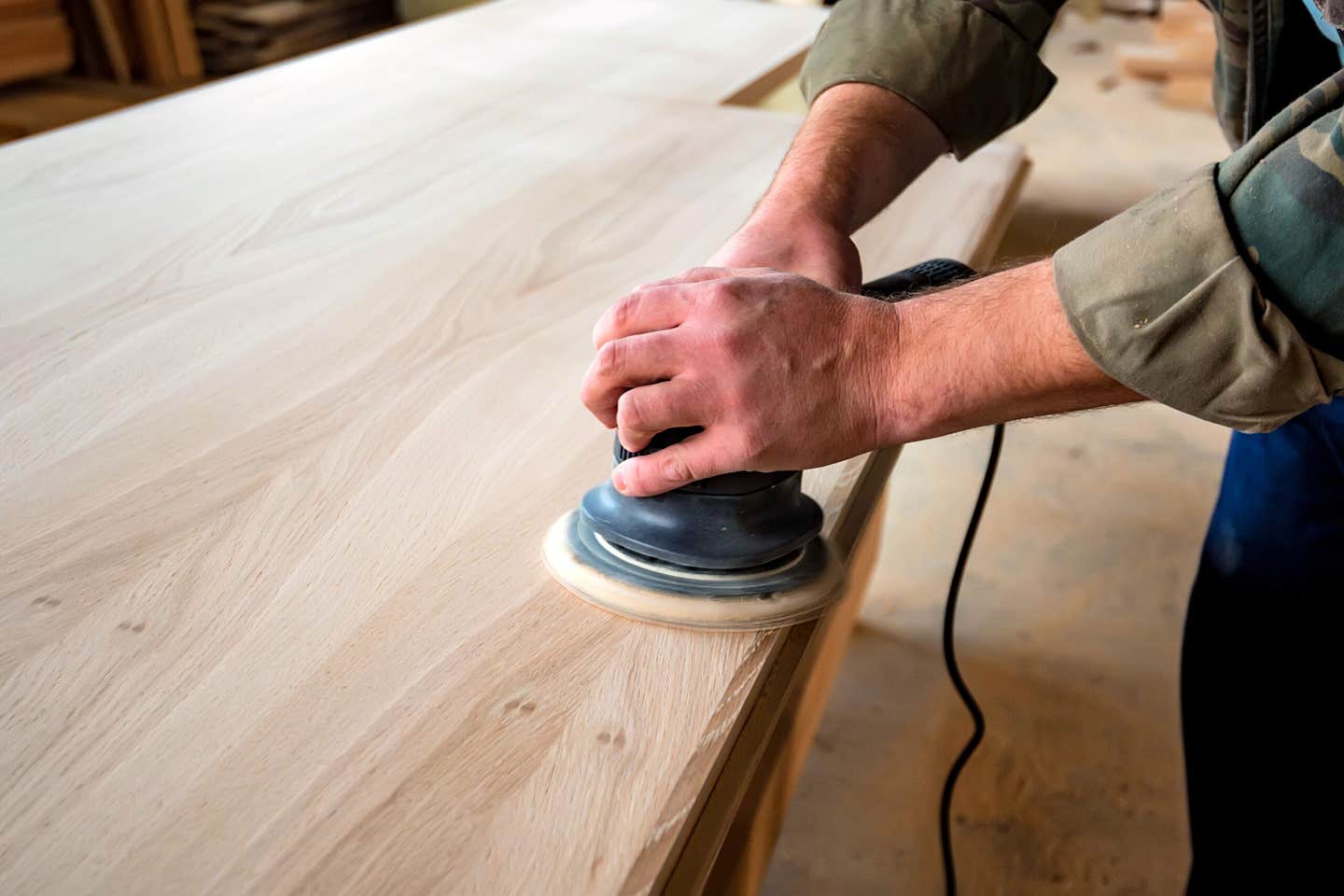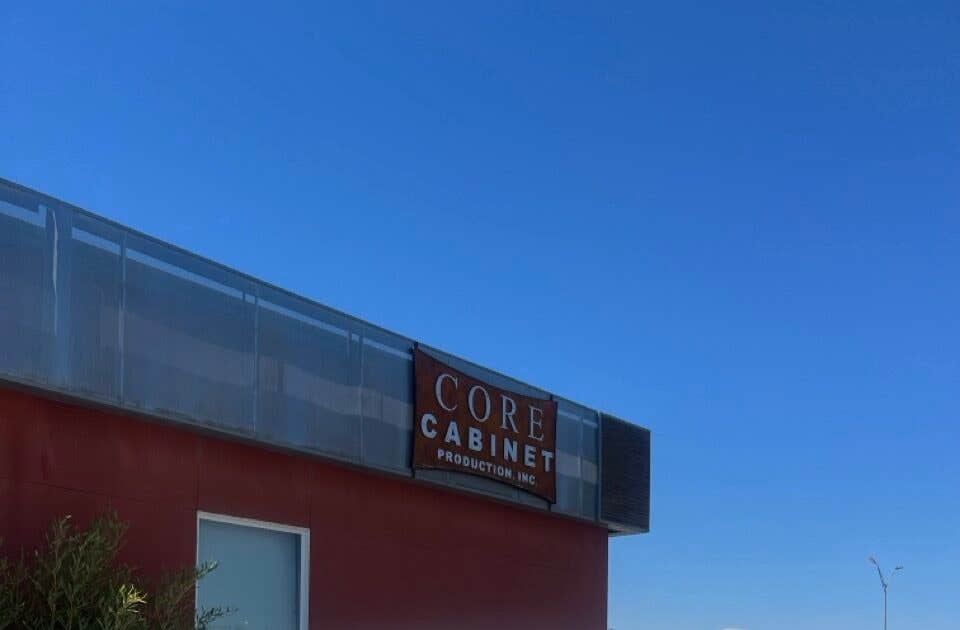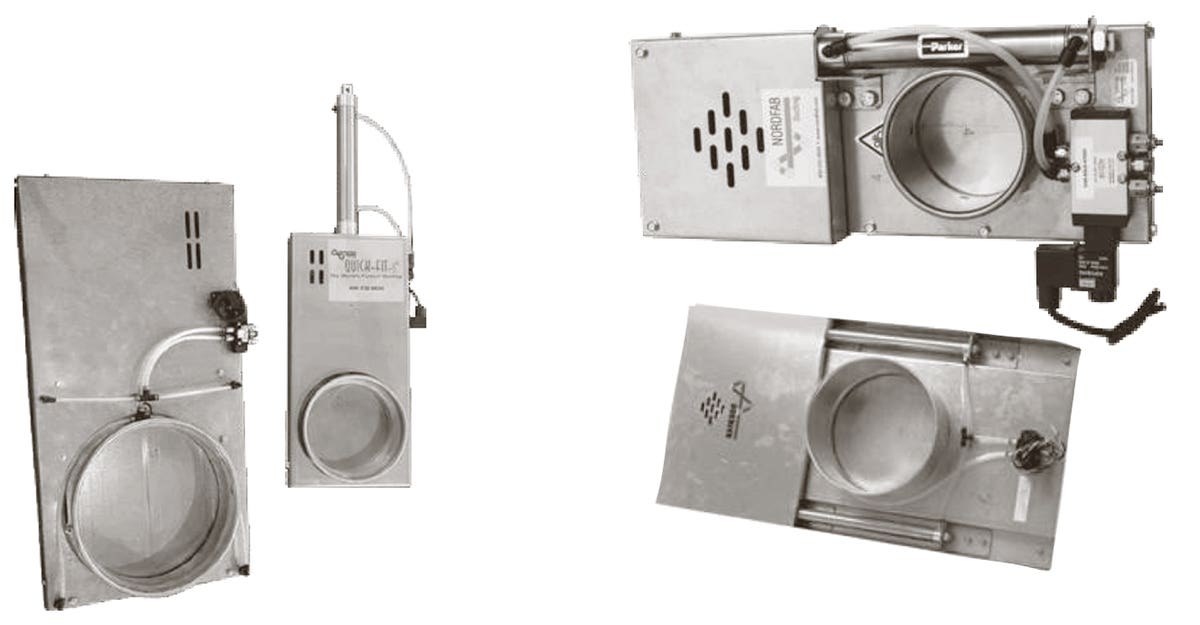The Mechanics of Outsourcing
How to determine the true costs, benefits, logistics and pitfalls of using outside suppliers
Outsourcing simply means buying in components such as doors, drawers, cabinet boxes and accent pieces, rather than making them in-house. It’s a way for custom shops to be able to increase their volume. That’s because the machines aren’t tied up, so a shop can take on several jobs at the same time.
It’s also a way to add to their catalogs, because outsourcing suppliers offer so many options (door styles, materials, moldings and so on), and most of them will even do the design work. The shop sends in a floorplan and a cabinet style, and the supplier will draw the job and make photorealistic images of the completed kitchen, which can then be used to close the sale. Plus, it’s a way for busy woodshops to meet deadlines, because there’s no log jam at the CNC or the spray booth.
The most salient, and yet hidden, part of outsourcing is the money. When full cabinets or parts arrive on a pallet, already finished and ready to assemble, are they really less expensive than if the woodshop had made them? Although it looks simple at first glance, determining the true costs and savings involved in outsourcing can be quite tricky.
Working out the cost
Building casework in-house involves three cost streams – time, materials and overhead. It’s relatively easy to figure out time on the shop floor, especially if the woodshop tracks job hours. Where it gets hazy is tracking the time that it takes to bid and manage each job. That’s because very few small businesses track the hourly activities of their management and support professionals, especially when they are salaried and/or commission based. Sometimes, those experts spend a lot of time talking to customers, traveling back and forth to the jobsite for tasks such as taking measurements or showing samples, and then working on drawings and other sales tools.
If a shop can use an outsourced, online catalog and also doesn’t need to do drawings, that can dramatically reduce those hours. Even if the CAD work is done in-house, most of the larger outsourcing suppliers have libraries of cabinets that can be popped into drawings to save time.
Then there’s the project management. When more than one job is going through the shop, it’s difficult to accurately assess how much supervisory and support time is dedicated to each project. Consider, for example, the amount of time spent helping and directing newer workers. Their need to learn processes and methods, even things as simple as where materials or tools are stored, eats into the time that it takes on the floor to build boxes, and increases the time it takes to manage jobs.
If a shop isn’t making parts and assembling cabinets in-house, a lot of those untracked supervisory hours go away. You don’t have to train people when they’re not needed. The point here is that outsourcing isn’t just about the time that’s saved on the floor, but also in the office. And that economy of resources needs to be considered when assessing the true cost, or savings, that are created by having another manufacturer build some, or even all of a job.
Once a woodshop engages with a reliable supplier and has run a few jobs, another gray economy comes into play. There are no rejects, no bad parts, and no reworks or remakes. Those costs are absorbed in the supplier’s bid process.
Beyond the direct and obvious savings in labor costs when a shop buys in, rather than building in-house, there are also some attendant savings. If the shop isn’t running machines, it doesn’t have to pay to lease or buy them. It also doesn’t have to pay an electric bill to run them, or collect sawdust from them, or replace sanding belts and tooling on them, or sharpen cutters, or order inserts. And it doesn’t have to pay people to service anything. That includes the time spent updating software, plus relearning and then training people in new programming or apps.
Material matters
One of the larger hidden costs in any cabinet or furniture shop is inventory. That’s why one of the core tenets of lean management expressly tackles this area. The just-in-time philosophy uses ordering and warehouse procedures to eliminate waste.
Warehousing sheet stock, adhesives, finishes, hardwoods, foil, edgebanding, slides and myriad other products required to keep production up and running is astonishingly expensive. There’s the cost of purchasing these goods, which ties up cash that could be used for investment or reducing debt. There’s the somewhat hidden layer of cost involved in having everything shipped or delivered. Then there are the direct time costs – those hours spent researching, ordering, uncrating, checking, shelving and even entering the parts and supplies in inventory on a spreadsheet. Over the course of a financial year, they can become quite significant, and these are all hours that are not assigned to a specific job. So, they are rarely considered when a woodshop weighs whether or not to outsource a specific project.
Many materials come in case lots, or have minimum ordering quantities, or good price breaks in larger volume. So, shops tend to purchase an abundance of some products that can take a few months or even years to get around to using. Sometimes they stay on the shelf forever or are wasted. How many times have we purchased hardwoods only to discard a large percentage of them through planing and ripping, or doing that cross-cut dance through the defects? That’s all cash left on the shop floor that could be doing something more efficient. If a dollar saved is then spent to reduce debt, it is now effectively earning the interest rate on that debt, in addition to saving the money that was spent on the product. There are two efficiencies there that epitomize the Ben Franklin quote, “a penny saved is two pence clear”.
Overhead and outsourcing
Overhead refers to any business expense that doesn’t include labor or materials. Fixed overhead includes predictable costs such as rent or mortgage payments, while operating overhead covers variables such as the heat and electric bills. Woodshops that outsource components can often experience an immediate decline in variable overhead, and can sometimes plan for an eventual reduction in fixed expense.
If the shop is running with fewer people and fewer hours (because fewer parts are being made in-house), the most obvious variable overhead expense to decline is payroll. And that’s usually the first thing that shop managers consider when deciding whether to outsource. But so many other attendant factors also diminish, and all of these bear serious consideration when weighing the benefits of buying in. For example, the electric bill goes down. Idle machine motors and a reduced need to heat or cool unused areas of the shop all contribute to this.
If a shop embraces outsourcing in full measure, it can have jobs delivered flat packed on pallets directly to the jobsite where they are ready to assemble (RTA). That saves the cost of receiving product at the shop’s loading dock, storing it where assembled boxes take up a lot of room, plus loading and delivering it to the jobsite. This opens up a huge opportunity to reduce one of the largest overhead costs in any business, rent or mortgage payments. The shop can entertain several options here, including moving to smaller premises, or sub-letting large areas of the space to other businesses. It can also open up the opportunity to expand into already existent space by changing the nature of activities. For example, a large shop area that has until now been used to assemble kitchens and get them ready to deliver could perhaps be repurposed so that the shop offers a complementary service such as countertops, or sign-making, or perhaps expanded subcontracting of CNC processing for other, similar businesses. Such a move can belay staff reductions and use expertise and equipment already acquired to branch out in new directions.
One of the less visible overhead savings in adopting outsourcing is the accounting function. Doing payroll, and processing paperwork related to inventory and receiving can eat up a lot of staff time. Some shops find that when they use outsourcing to reduce the scope of operations and the number of employees, bookkeeping becomes so manageable that they can bring a lot of it in-house. A staff person using programs such as Quickbooks can be considerably less expensive than having an outside accounting firm track mundane business records. Most accountants can import those shop-generated records quarterly into their own software, and prepare tax returns and estimated payments using that data. They can also audit the payroll procedure, especially for the first few months, by remotely accessing the woodshop’s desktop computer (with the shop’s permission). This can ensure the shop owner is using the bookkeeping software correctly, and processing withholding as required by law.
Outsourcing has limits
So far, we’ve looked at the upside of outsourcing. As with any process, there are some pitfalls to avoid too, and things to think about before jumping on board.
The first, and by far the most important, is that a woodshop’s reputation depends on the quality of its products and services. When components or entire jobs are being manufactured remotely and perhaps delivered directly to the jobsite, the quality of the supplier’s materials and workmanship are absolutely critical.
Your name is on each and every one of those cabinets, doors and drawer slides.
That suggests that a shop should develop a relationship with a single supplier, or at most a couple of highly reputable manufacturers, and become intimately familiar with their catalogs before offering their product to clients. Woodshop owners might want to begin the selection process by attending one or two of the largest industry shows such as IWF in Atlanta or AWFS in Las Vegas. There, one can spend some time physically examining product in the various booths. A two-dimensional, online photograph of a melamine drawer side can be a lot different when you can actually run your fingers over it.
The Kitchen & Bath Industry Show is also a learning opportunity, where a woodshop owner can get a feel for the latest design and technologies before committing to an outsourcing supplier. It’s important to know how well the supplier’s catalog relates to the current industry and consumer trends. There’s not much point in switching to an outdated catalog.
A visit to the supplier’s facility may also be in order. The factory may not look anything like the beautiful photographs on its website. But that aside, a visit can transform an electronic relationship into a personal one. That can ease a great number of concerns when ordering remotely, or when glitches occur on the jobsite and they need to be addressed immediately over the phone.
Be aware of shipping charges, and fees related to timing. If you don’t need it by Thursday, don’t pay a premium for a rush job, or for rush delivery.
Ask about thicknesses, in everything from foil and edge banding to veneers and panels. It’s easy to overlook a measurement, but if a 5/8”-thick MDF shelf sags after a few months when one with a thicker plywood was available, this reflects on your reputation.
Marketing
If a woodshop creates a new relationship with an outsourcing partner, the fundamentals all change. Yes, the factory may offer exactly the same door styles and finishes that the shop has been building, but odds are it also offers a vast array of new choices. Traditional woodshops that make five-part, wood-grain doors are aware that the market is changing. Today, fewer than half the kitchens being built still go that route, and outsourcing is a way for those shops to do an end run. They can offer the most popular styles right away, with no major investment in equipment, inventory or training.
But that opens another door. The shelves are now dripping with new product, so how does a shop let buyers know?
A good place to start, after first running a few jobs and getting used to the new realities, is to have some open houses for area home builders, general contractors, and also related subs such as finish carpenters and countertop suppliers. It’s a good idea to be able to walk them through the newly expanded selection by actually having a cabinet or two on hand, and especially some door samples, to explain the construction details and design options. Rendered drawings of completed kitchens or other casework (most outsourcing supplies can provide these as high-resolution JPG or PDF images) can be scrolling in the background on a wide screen television or computer.
On a different day, the shop can organize an event for real estate professionals. They are on the front lines when it comes to home renovation, and they are often overlooked by cabinetmakers and even kitchen designers. Perhaps the shop can offer them a small finder’s fee for referred jobs, either a fixed amount or a minor percentage. When they sell a home that has everything the buyers wants except that the kitchen or bathroom is a bit dowdy, they can point that person in the woodshop’s direction. This can be done right at the house by opening up the shop’s website on a tablet, and the impulse to seize that imminent solution can be quite powerful.
Several websites such as Yelp, Facebook, Pinterest and Twitter provide ways for consumers to let others know about good experiences. A larger outsourcing supplier that has some history behind it may already have insights into using these platforms to promote its product, and it can possibly share ways that a woodshop can do so at a local level. Testimonials online are the new word-of-mouth referrals. The woodshop can also spend a little time talking to marketing professionals at the outsourcing factory and learn exactly what resources are available that can be used on the shop’s website and Facebook page, or shared in email campaigns through organizations such as Constant Contact, iContact, SendGrid and Campaign Monitor.
The bottom line with outsourcing is that most aspects of it make good business sense and generate more profits, less waste, and faster growth. The trade-off is that woodworkers become businesspeople, and surrender some of their craft for the glitter of gold. It’s not as romantic, but it’s definitely worth considering. Many smaller shops have created a synergy where they have retained some customized functions in-house and exported much of the mundane, repetitive work. This allows them to differentiate their product from those of the big box stores or online casework retailers, while still paring the bottom line and remaining profitable. Ironically, many of the most demanded ‘custom’ upgrades are actually products that can be outsourced from non-casework suppliers, such as corbels, moldings, lighting, electronics and especially hardware.
For those, a cabinetmaker really needs to go to the shows and see what’s available.
This article originally appeared in the June 2019 issue.







